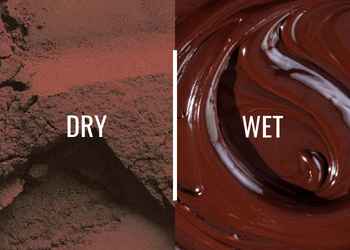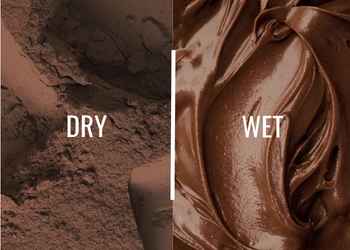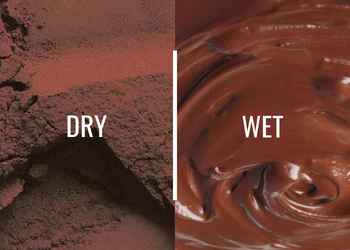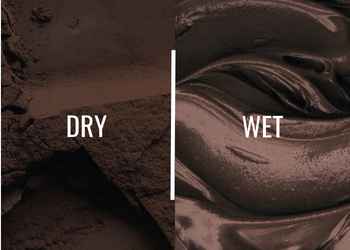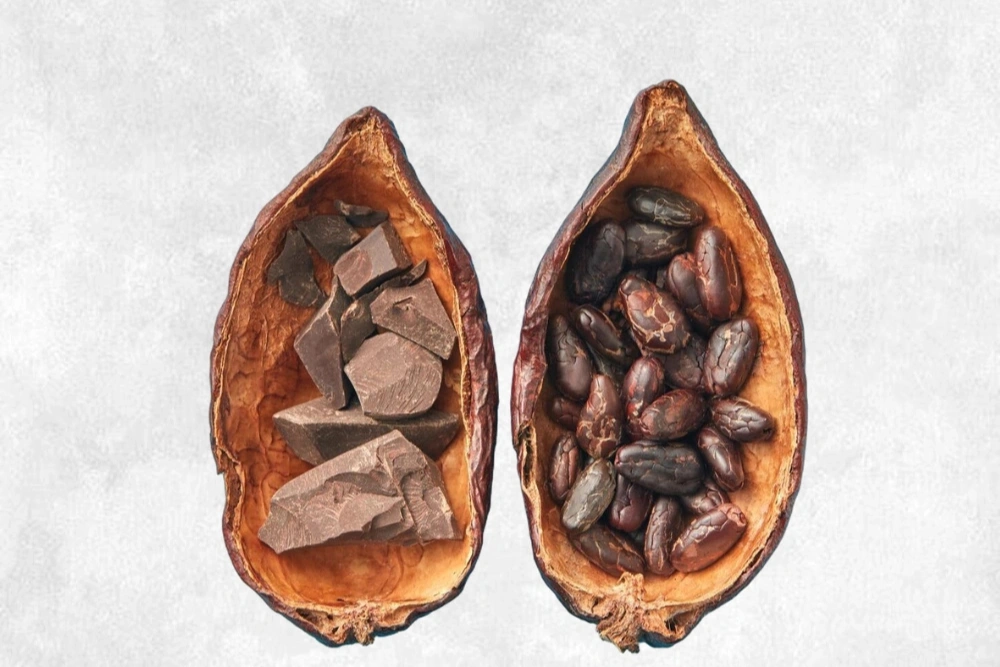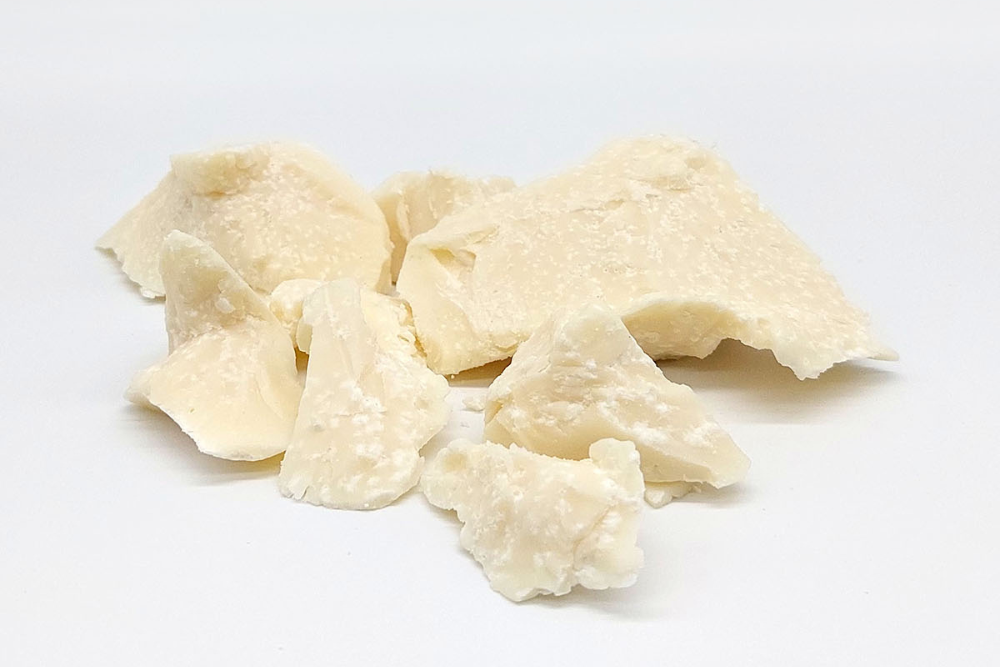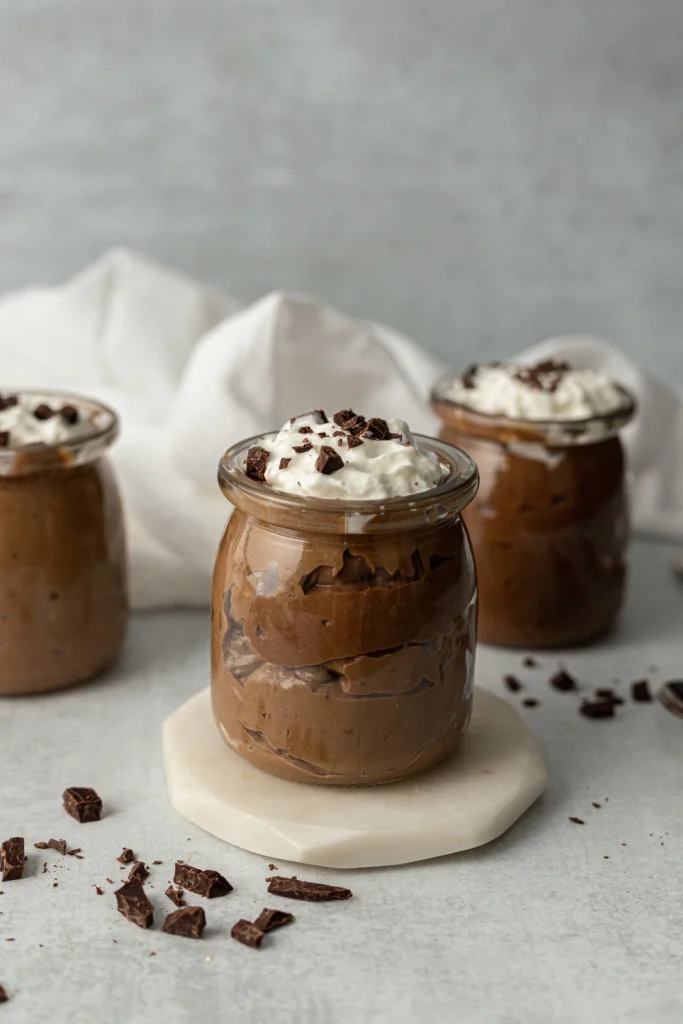
چرا انتخاب پودر کاکائو مناسب برای صنایع لبنی اهمیت دارد؟
انتخاب پودر کاکائو مناسب در صنایع لبنی فقط یک تصمیم تأمین نیست؛ این انتخاب مستقیماً بر کیفیت نهایی محصول، تجربه مصرفکننده، میزان رضایت مشتری و حتی هزینه تمامشده اثر میگذارد.
نقش کاکائو در طعم، رنگ و بافت نهایی محصول
پودر کاکائو چیزی بیش از یک طعمدهنده است؛ در محصولات لبنی مثل شیرکاکائو، دسرهای لبنی و بستنی، این ماده تأثیر زیادی بر پروفایل طعمی، شدت رنگ و حس دهانی محصول دارد.
انتخاب نوع مناسب (مثلاً کاکائو آلکالایز با رنگ طبیعی یا high fat برای آروما قویتر) میتواند با دوز مصرف پایینتر، تجربه حسی بهتری برای مصرفکننده ایجاد کند.
در بازارهای رقابتی مثل بستنی یا کرم صبحانه، طعم و ظاهر، نقش تعیینکننده در رضایت مشتری و تکرار خرید دارند.
پودر کاکائو High Fat | مناسب برای محصولات با بافت و طعم غنیتر :
- دسرهای لبنی شکلاتی با طعم عمیق
- کرمهای صبحانه با بافت نرم و روان
- بستنیهای کاکائویی پرچرب با حس دهانی مطلوب
✅ مزایا: افزایش آروما و شدت طعم، بهبود بافت دهانی و پوشش طعمی، تثبیت رنگ و ساختار در محصولات پرچرب
پودر کاکائو Low Fat – مناسب برای محصولات نوشیدنی :
- شیرکاکائو صنعتی با ماندگاری بالا
- نوشیدنیهای پروتئینی یا رژیمی با چربی کنترلشده
- محصولات کمهزینه با فرمول ساده و اقتصادی
✅ مزایا: کاهش قیمت تمامشده، انحلالپذیری بهتر در فرمولهای مایع، سازگاری بیشتر با محصولات کمچرب
تفاوت بین پودرهای Low Fat و High Fat در صنایع لبنی :
در صنایع لبنی، انتخاب بین پودر کاکائو پرچرب (high fat) و کمچرب (low fat) به نوع محصول نهایی و هدف فرمولاسیون بستگی دارد. هر نوع، ویژگیها و مزایای خاص خود را در ماتریسهای لبنیاتی دارد.
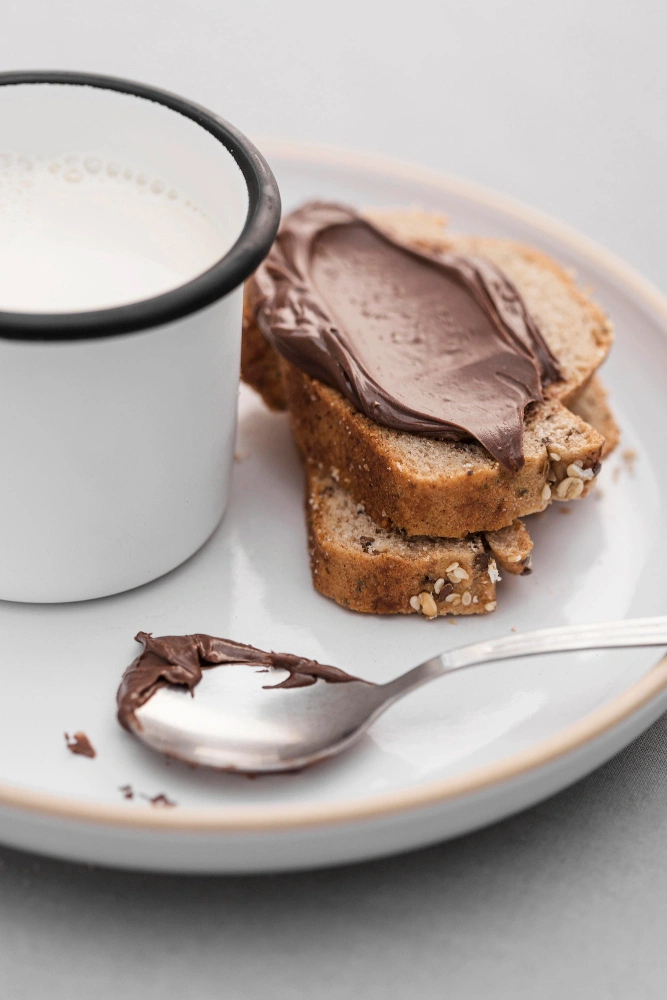
پودر کاکائو مناسب برای دسرهای لبنی صنعتی
استاندارد حرفهای موس، پودینگ و کرم صبحانه
در صنایع لبنی، انتخاب پودر کاکائو high fat (چربی 22 -24 %) نقشی تعیینکننده در طعم، بافت و ماندگاری دسرهایی مانند موس، پودینگ و کرم صبحانه دارد. تجربه تولیدکنندگان نشان میدهد که استفاده از کاکائو آلکالایز شده با چربی بالا، علاوه بر طعم غنی و شکلاتی، باعث ایجاد بافتی کرمی، یکدست و پایدار در این محصولات می شود.
چرا پودر کاکائو high fat ؟
طعم و رنگ شکلاتی اصیل
پراکندگی یکنواخت در محیطهای لبنی
افزایش ویسکوزیته و قوام مطلوب
این ویژگیها بر پایه تجربیات واحدهای R&D و نتایج تستهای صنعتی تایید شده است. شما با انتخاب پودرهای کاکائو مرغوب از برندهایی مانند بسدورپ و بری کلبوت، مسیر تضمین کیفیت و ثبات در تولیداتتان را هموار میکنید.

کدام پودر کاکائو در شیرکاکائو و نوشیدنی لبنی تهنشین نمیشود؟
برای جلوگیری از تهنشینی در شیرکاکائو، نوشیدنیهای پروتئینی و سایر محصولات لبنی مایع، پودر کاکائو باید دارای ویژگیهای عملکردی زیر باشد:
چراعدم ته نشینی پودر کاکائو در شیر سرد حیاتی است؟
بسیاری از نوشیدنیهای کاکائویی در دمای سرد یا محیطی مصرف میشوند. پودر کاکائویی با انحلالپذیری پایین در این شرایط، دچار تهنشینی شده و بافت نوشیدنی را نامطلوب میکند. علاوه بر آن، عدم انحلال مناسب موجب میشود:
- طعم یکنواختی در نوشیدنی ایجاد نشود.
- ظاهر محصول تیره و گلآلود شود.
- نیاز به استفاده از استابلایزر ها را افزایش میدهد، در نتیجه هزینه تولید بالا میرود.
بنابراین، اندازه ذرات بسیار ریز و در نهایت انحلالپذیری بالا در شیر سرد، ضامن کیفیت ظاهری، طعمی و حسی محصول است.
انحلالپذیری بالا | کلید جلوگیری از تهنشینی در شیرکاکائو و نوشیدنیهای لبنی :
در تولید شیرکاکائو و نوشیدنیهای لبنی، انحلالپذیری ضعیف پودر کاکائو میتواند منجر به تهنشینی، رسوب و ناهماهنگی در بافت محصول نهایی شود. برای جلوگیری از این مشکلات، انتخاب پودر مناسب از نظر اندازه ذرات و ساختار فرآوریشده ضروری است.

برای بستنیهای کاکائویی و شکلاتی، کدام پودر کاکائو طعم و بافت بهتری میدهد؟
در تولید بستنیهای کاکائویی و شکلاتی، انتخاب پودر کاکائو مناسب، عامل کلیدی در خلق طعمی اصیل و بافتی نرم در دمای انجماد است. استفاده از کاکائوهای خاص مانند DDP، DF780 و SR، به تثبیت طعم طبیعی شکلات و کاهش تلخی کمک میکند.
مزایای استفاده از کاکائوهای تخصصی در بستنی:
طعم شکلاتی عمیق و متعادل بدون نیاز به طعمدهندههای مصنوعی
پایداری رنگ و طعم در طول نگهداری
سازگاری با چربیهای لبنی و گیاهی
این مزایا حاصل بهینهسازی فرمولاسیون و تجربیات صنعتی است. انتخاب هوشمندانه پودر کاکائو، کیفیت و تمایز در تولید بستنیهای کاکائویی و شکلاتی را تضمین میکند.
استفاده بیش از حد از استابلایزر در فرآوردههای لبنی حاوی کاکائو
- در تولید شیرکاکائو و نوشیدنیهای لبنی، استابلایزرها برای جلوگیری از تهنشینی و بهبود یکنواختی بافت استفاده میشوند. اما استفاده بیش از حد از این ترکیبات میتواند به چالشهای کیفی جدی منجر شود:
ایجاد بریدگی و لخته شدن در سطح شیر : استابلایزر اضافی میتواند با پروتئینهای شیر واکنش داده و باعث ناپایداری ساختار محصول شود، در نتیجه بافتی دلمهای و لختهمانند در شیرکاکائو ایجاد میشود.
کاهش طعم و اروما کاکائو : شدت طعم و آروما به دلیل وجود لخته های ایجاد شده کمتر میشود.
📌 راهکار: انتخاب پودر کاکائو باکیفیت و انحلالپذیری بالا که با درصد مصرف کمتر، رنگ و طعم مطلوب را تأمین میکند، میتواند نیاز به استابلایزر را کاهش دهد و از بروز این مشکلات جلوگیری کند.
پایداری طی زمان نگهداری (Shelf-Life Stability)
چالش پایداری فیزیکی پودر کاکائو در محصولات لبنی
کاکائویی که در ابتدا ظاهر و عملکرد خوبی دارد، ممکن است پس از چند روز در محصول نهایی دچار دو فاز شدن (Phase Separation)، تغییر رنگ یا افت طعم شود.
این ناپایداری در طول نگهداری، ناشی از ویژگیهای فیزیکی و ساختار ذرات پودر است که در محیط لبنی دچار تهنشینی یا جداشدگی فازی میشوند.
📌 به همین دلیل است که روی بستهبندی شیرکاکائو یا نوشیدنیهای لبنی نوشته میشود: «قبل از مصرف تکان دهید»؛ زیرا در غیر اینصورت، یکنواختی طعم و ظاهر محصول از بین میرود و بافت نوشیدنی مطلوب نخواهد بود.
تأثیر نوع آلکالایزر بر ثبات رنگ پودر کاکائو در فرآوردههای لبنی پاستوریزه یا UHT
بر اساس مطالعهای که توسط Atalar و همکاران (2025) انجام شد، انتخاب نوع قلیای مورد استفاده در فرآیند قلیاییسازی پودر کاکائو، تأثیر مستقیمی بر رنگ، طعم، ویسکوزیته و ارزش تغذیهای شیرکاکائو دارد.
- سدیم هیدروکسید (NaOH): بهبود پایداری رنگ و تقویت عطر با بافتی سبکتر و نرمتر.
- پتاسیم هیدروکسید (KOH): افزایش ویسکوزیته، غلظت و ایجاد بافت کرمی و غنی.
- پتاسیم کربنات (K₂CO₃): حفظ بالاترین میزان آنتیاکسیدانها و تثبیت pH در طول نگهداری.
📌 این نتایج نشان میدهند که در فرآیندهای حرارتی مثل پاستوریزه یا UHT، انتخاب نوع قلیا یکی از عوامل کلیدی در یکنواختی رنگ محصول نهایی و پذیرش مصرفکننده است.
مشکلات سازگاری با خطوط تولید اتوماتیک
برخی ویژگیهای فیزیکی پودر کاکائو مانند جذب رطوبت، گرد زیاد و جریانپذیری ضعیف میتوانند در عملکرد ماشینآلات صنعتی اختلال ایجاد کنند، بهویژه در خطوط تولید شیرکاکائو، دسرهای لبنی و نوشیدنیهای آماده.
رطوبت بالا موجب چسبندگی پودر در سطح سیلو و گرفتگی نازلهای پرکن میشود. گرد زیاد (Dustiness) باعث آلودگی هوای سالن تولیدمی شود. همچنین جریانپذیری ضعیف باعث اختلال در دوزینگ، اختلاط نابرابر و در نهایت تلفات مواد اولیه میشود.
📌 این مشکلات در مجموع منجر به کاهش راندمان، افزایش تلفات پودر و بالا رفتن هزینههای نگهداری تجهیزات میشوند. انتخاب پودر کاکائو با ویژگیهای فیزیکی کنترلشده، راهکاری مؤثر برای تضمین پایداری و بهرهوری در تولید صنعتی است.
ناپایداری طعم در محصولات شیرینشده یا رژیمی
برخی پودرها در کنار شیرینکنندههای مصنوعی یا استویا، طعم گس یا تهطعم فلزی ایجاد میکنند. انتخاب درست باید با ارزیابی حسی در شرایط نهایی انجام شود.
چالشهای پنهان در انتخاب پودر کاکائو برای صنایع لبنی :


جمعبندی : هر محصول لبنی، یک پودر کاکائوی تخصصی میخواهد
در صنایع لبنی، یک نسخه واحد برای همه محصولات وجود ندارد. ویژگیهای مورد انتظار در شیرکاکائو، دسرهای لبنی، کرم صبحانه یا بستنی متفاوت است و هر کدام به پودر کاکائوی خاص خود نیاز دارد.
کدهای DDP، DF780 و SR هرکدام با توجه به طعم ، رنگ، بافت و پایداری مورد نیاز، برای طیف متنوعی از محصولات لبنی طراحی شدهاند:
پایداری در نوشیدنیهای لبنی
بافت کرمی در دسرها و کرم صبحانه
طعم و بافت نرم در بستنیهای کاکائویی
انتخاب هوشمندانه از این پودرها، فرمولاسیون را دقیقتر و تجربه مصرفکننده را بهطور محسوسی ارتقا میدهد.


